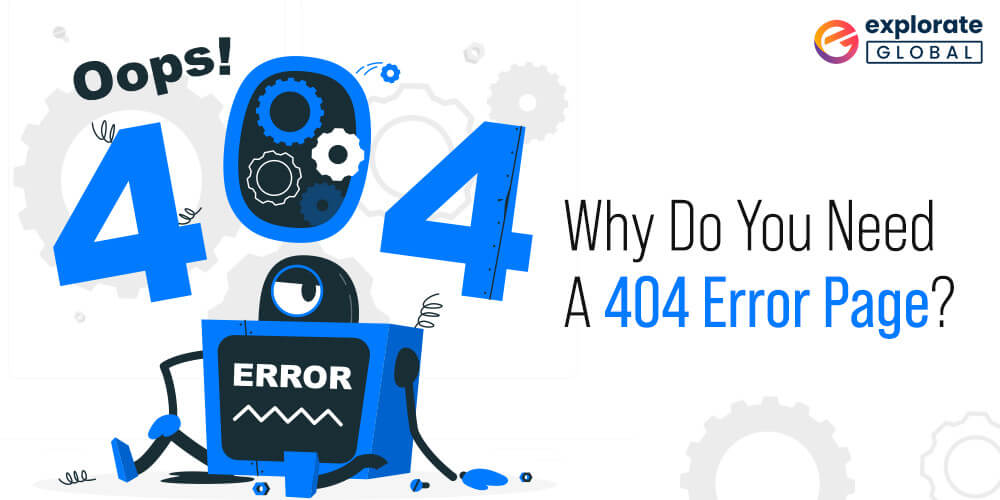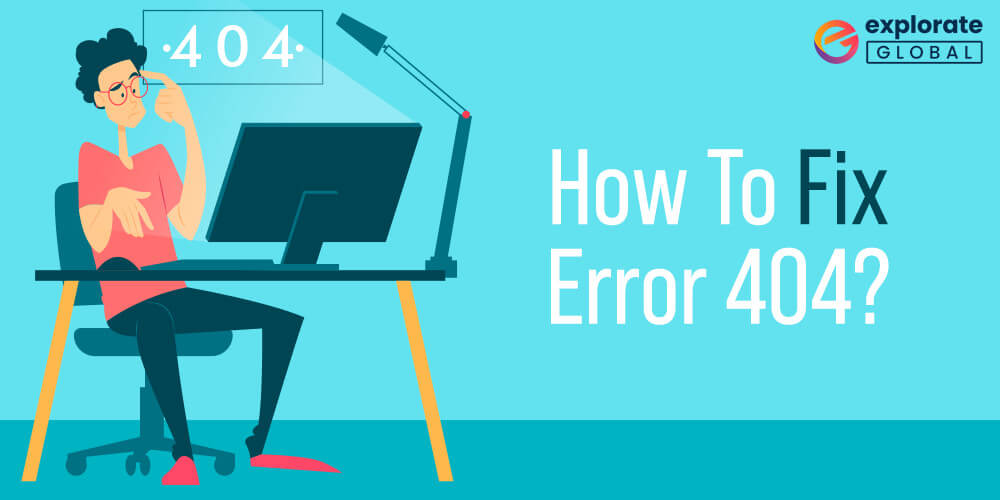
The 404 error page is a much dreaded error message. The 404, HTTP 404, 404 Not Found, 404 Error, etc., are all frightful and possibly the worst error outcomes for a user as well as a webmaster. In this post we are going to know everything that there is about this 404 page, which brings us to our first question, “What is 404 error?”
What is a 404 error?
The 404 Error, HTTP 404, Page Not Found, 404 Not Found, 404, File Not Found, or Server Not Found are all one and the same type of error messages. These error messages are Hypertext transfer protocol or HTTP standard response code, which indicates that though the browser was able to communicate with the given server, unfortunately the server could not find what was requested.
During a computer network communication, when the communication takes place via standard HTTP, when a web browser makes a request for a web page, the server is required to respond to that request, in the event of unable to locate the requested web page, error 404 page occurs.
In short, 404 error happens when the server is unable to find the URL requested by the user.
What causes 404 errors?
One of the following events is likely to cause 404 page:
-
- Misspelt URL- A typing error or spelling mistake is bound to happen sometime.
- The page has been removed or moved or deleted and no redirection set up has been provided.
- URL was incorrect at the time of its set up or URL was linked incorrectly.
- The server is either malfunctioning or has been shut down.
What are the subtypes of 404 pages?

There are various events that can cause the 404 error. For every event or cause a specific type of 404 error exists. The causes of 404 error can be understood by studying the various types of 404 error responses.
| 404 ERROR CODE | 404 ERROR CAUSE/ TYPE |
| 404.0 | Not found. |
| 404.1 | Site Not Found. |
| 404.2 | ISAPI or CGI restriction. |
| 404.3 | MIME type restriction. |
| 404.4 | No handler configured. |
| 404.5 | Denied by request filtering configuration. |
| 404.6 | Verb denied. |
| 404.7 | File extension denied. |
| 404.8 | Hidden namespace. |
| 404.9 | File attribute hidden. |
| 404.10 | Request header too long. |
| 404.11 | Request contains double escape sequence. |
| 404.12 | Request contains high-bit characters. |
| 404.13 | Content length too large. |
| 404.14 | Request URL too long. |
| 404.15 | Query string too long. |
| 404.16 | DAV request sent to the static file handler. |
| 404.17 | Dynamic content mapped to the static file handler via a wildcard MIME mapping. |
| 404.18 | Query string sequence denied. |
| 404.19 | Denied by filtering rule. |
| 404.20 | Too Many URL Segments. |
What is the difference between 404 and soft 404?
A 404 page error occurs when a page is not available or could not be located by the server and the server sends the correct HTTP status code – “404 not found”, to the browser telling that the page doesn’t exist or can’t be found or couldn’t be located.
While a soft 404 page error happens when the server sends 200 OK status for the requested web page to the browser, but the browser/Google thinks that the page should return error response 404 and displays the same to the user.
A soft 404 is a URL that returns a page telling the user that the page doesn’t exist and also a 200-level-success- code. But the browser intervenes and returns an error 404 page to the user. In cases where a page with little or no content or sparsely populated content or empty page might be returned, displaying an error 404 page is still acceptable. But returning a success code, rather than 404 is a bad practice.
The term and concept of soft 404 error was introduced by Ziv Bar-Yossef et al in 2004.
Is error 404 page good or bad?
Unbelievable but true that error 404 page serves an important purpose of telling google and its users that the page/ URL doesn’t exist anymore and also, it could have been moved to another location on the site or the page is no longer available.
In the case of events stated above, error 404 page is a perfect response.
Although if a web page search request returns an error 404 page, google or other search engine will not index it. However, the actual 404 pages might not hurt SEO but the links containing URLs pointing to 404s called as broken links, might hurt and create bad experience for SEOs.
Why do you need a 404 error page?
If you are developing a new website, the developer should add a 404 page. You can use content management systems like WordPress to develop 404 pages quite easily. Creating a customized 404 page with helpful redirection links and search bar (optionally) helps in:
-
- Help uplift digital marketing efforts of your website.
- Bounce rate of the site is reduced.
- Bound the users to your website when they are given a proper response and message along with redirect links.
- Users will feel satisfied when receiving a proper response rather than a generic “page not found”.
- Helps people find the information they are looking for.
- When provided with quality content, it encourages people to explore the site further.
How to fix error 404?

Here’s what you can do to fix 404 page:
-
- The easiest way to fix 404 pages is via redirecting the page to another one using a 301 redirect (commonly used).
- Correct the URL if it’s a human error caused when the URL was linked incorrectly at the time of set up.
- You can restore a deleted page.
- Refresh the page using refresh icon or F5 function.
- Double check the URL for spelling mistakes.
- Clear your cache and cookies.
- You can always reach out to the concerned company, service or organization and let someone know about the issue.
Why redirecting to the homepage results in a negative user experience?
-
- Users will feel cheated on since the information promised to them has been denied.
- Users will be baffled as to how they landed on the home page when they obviously clicked on a different page.
- Users end up on a page or site that is completely off the ballpark of the information/page they were looking for.



Hi, I am so excited I found your blog, I really found you by chance, while I was researching on Digg for something else, Regardless I am here now and would just like to say cheers for a tremendous post and a all round exciting blog (I also love the theme/design), I don’t have time to read through it all at the moment but I have bookmarked it and also included your RSS feeds, so when I have time I will be back to read a lot more, Please do keep up the great job.
Good read!
Keep up the good work.
Great post on 404 error pages!
I wasn’t ware of its importance from SEO perspective.
Hello There. I discovered your weblog using msn. This is a really well written article. I’ll be sure to bookmark it and come back to read extra of your useful information. Thanks for the post. I will certainly comeback.
Great post!
I customized my 404 page after reading this post.
I cannot thank you enough for such great writing and all people to their up to the point reviews.
I think this is one of the most significant information for me. And I’m glad reading your article.
I wasn’t aware of the fact that a 404 error page can help in reducing the bounce rate. Thanks for the information!
Thanks a ton for sharing such an informative article.